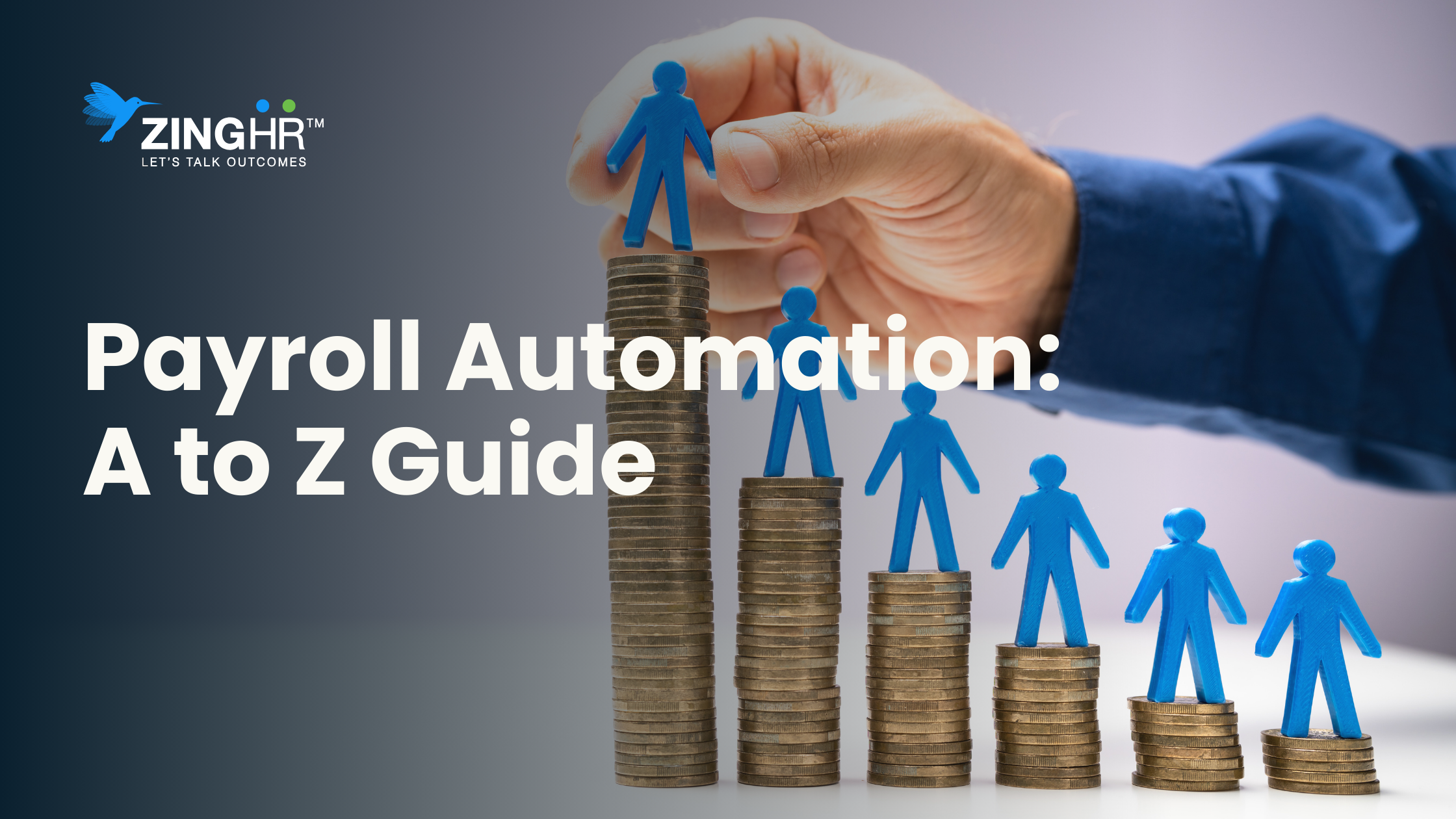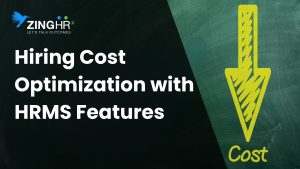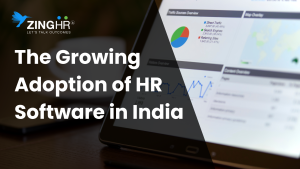Payroll is one of the most critical and time-consuming HR functions.
From salary calculations and tax filing to ensuring compliance, even a small mistake can lead to financial penalties, regulatory risks, and employee dissatisfaction.
That’s why more businesses are now shifting towards payroll automation software to simplify payroll process and focus on strategic decision-making rather than repetitive calculations.
This blog is specially guide for business owners, HR professionals, and payroll managers who may not yet be aware of how payroll automation works or why it is becoming a necessity.
The insights shared here are sourced from market research, HR tech platforms, and real challenges faced in the payroll industry.
What is Payroll Automation?
Payroll automation is the process of using technology to automatically calculate salaries, deduct taxes, and eliminate manual tasks.
Automated payroll systems integrate with time-tracking, leave balances, calculate tax withholdings, benefits deductions, and generate payslips with minimal human intervention.
Payroll key components include:
- Salary computation: Automates basic pay, overtime, incentives, and deductions
- Tax Process: Updates tax slabs automatically to avoid errors and penalties.
- Payslip generation: Creates digital payslips for employees to access and download via self-service portals.
- Direct bank transfer: Timely salary deposits directly into employee bank accounts.
- Record-keeping and reporting: Provides insights into payroll expenses, compliance, and workforce costs.
- Time and Attendance Tracking: Integrates directly with biometric devices, face recognition systems, or attendance software to ensure that working hours, overtime, and late arrivals are recorded accurately.
- Leave allowance: Tracks employee leave balances, approvals, and allowances, and automatically adjusts salary based on leave policies.
- Regulatory compliance: Handles statutory contributions like PF, ESI, TDS, or WPS (in UAE and GCC countries).
Payroll Automation vs Manual Payroll Comparison Summary
| Processing Time | 5-20 hours per pay period | 30 minutes – 2 hours per pay period |
| Error Rate | 1-8% of payroll records | Less than 0.1% of payroll records |
| Compliance Management | Manual monitoring of law changes | Automatic updates and compliance |
| Cost per Employee | $200-400 annually | $50-150 annually |
| Employee Satisfaction | Limited transparency, frequent issues | High transparency, self-service access |
| Scalability | Requires proportional staff increase | Handles growth without additional overhead |
| Data Security | Paper-based, limited security | Encrypted, secure cloud storage |
| Reporting | Basic reports, manual compilation | Advanced analytics, real-time insights |
| Integration | Minimal system connectivity | Seamless integration with HR/accounting |
| Accessibility | Office-based, business hours only | 24/7 access from anywhere |

Zero Touch Payroll for On-Time Salary Disbursement
Traditional Payroll vs Automated Payroll
The difference between traditional and automated payroll is like comparing handwritten letters to email. Both aim to pay employees on time, but the way they work is very different.
Manual vs. Automated Payroll: A Comparison:
1. Process:
- Traditional: Manual data entry using spreadsheets and paperwork
- Automated: Pulls data directly from time tracking systems and calculates everything instantly using in built formulas.
2. Cost:
- Traditional: Involves Higher HR and admin costs because of manual work, repeated corrections, and dependency on staff
- Automated: Requires payroll software but reduces long-term costs by saving time, minimizing errors.
3. Accuracy:
- Traditional: Human errors are common in salary calculations, deductions.
- Automated: Predefined rules and integrated with employee data, so it ensures error-free calculations every time.
4. Compliance:
- Traditional: HR teams must manually track and update tax laws, labor regulations, and statutory deductions and it can be increase compliance risks.
- Automated: System automatically updates compliance requirements as per local labor laws (PF, ESI, TDS, WPS, etc.) to avoid penalties and ensure legal accuracy.
5. Audit & Reporting
- Traditional: Preparing audit reports manually is time-consuming and prone to missing records.
- Automated: Every transaction is digitally stored, creating instant reports in any format and clear audit trails for easy tracking.
6. Scalability
- Traditional: Difficult to manage the payout of employees across multiple locations.
- Automated: Easily handles workforce growth, multiple geographies, and complex salary structures without extra workload.
7. Employee Experience
- Traditional: Employees need to depend on HR for payslips, leave balances, or tax details.
- Automated: Payroll software offer self-service features where employee can access payslips, tax information, and leave balance anytime and anywhere.

We’ll Take Care of Your Payroll,
So you can focus on growing your business
What are the Benefits of the Payroll Automation Process
1. One-Time Investment
Unlike hiring additional payroll staff or outsourcing payroll services that create ongoing monthly costs, payroll automation usually requires a one-time setup cost or subscription fee.
Let’s understand by example: buying a car vs taking taxis. You pay upfront, but the long-term savings are substantial.
This enables your business to focus on more important tasks, such as growth and development.
2. Accuracy & Reduced Errors
According to the IRS.gov, Manual payroll has a human error rate of around 8 percent , which means eight employees out of a hundred receive incorrect paychecks due to mistakes in calculations, data entry, or compliance updates.
Automated systems can quickly and easily detect and correct errors, reducing the risk of costly mistakes. Additionally, a payroll system can provide detailed reports that can help you understand your payroll expenses, identify areas where you can make cost savings, and make more informed decisions.
3. Access to Real-Time Payroll Data
Payroll data gives employees and HR teams instant access to real-time payroll data, such as salary information, deductions, benefits, and tax details instantly, without delays.
This data transparency reduces confusion, minimizes back-and-forth queries, and helps employees trust the payroll process
4. Proactive Analytics
Modern payroll automation goes beyond just processing payments.
One of the strongest benefits of automation is its ability to generate proactive insights.
Payroll systems can identify trends, such as overtime patterns, tax liabilities, and compliance risks, well in advance.
These predictive analytics enable HR and finance teams to make informed, proactive decisions that enhance financial planning and reduce risks.
5. Audit Trails
In the process of payroll automation generate detailed audit trails that improve accuracy, accountability, and compliance.
Beyond just processing salaries, advanced payroll software automatically tracks the record of who made changes, when they were made, and what was changed, the approval, or update made in the system.
This not only strengthens accountability but also builds trust by showing that every transaction is traceable and secure.
6. Improves Employee Satisfaction
Employees often get frustrated with mysterious salary deductions or confusing calculations. So, a payroll system eliminates these issues and improves employee satisfaction by delivering error-free and on-time salary payments.
7. Compliance
Automating payroll can also help ensure compliance with tax and labour laws. The payroll system is an expert in this field and is up-to-date on all the latest regulations. This means software can ensure that your business is in compliance with all the relevant laws, which can save your business from costly penalties and fines. This can give organisations peace of mind, knowing that their payroll is being handled by experts who understand the legal requirements.
8. Increased Security
Another benefit of automating payroll is increased security. Payroll software usually has robust security measures in place to protect sensitive data, such as employee information and financial data.
This can give corporations peace of mind, knowing that their data is being kept safe and secure.
Challenges in Payroll Management Without Automation
1. Calculation Errors
Even the most careful HR professionals make mistakes when handling complex calculations manually because manual payroll increases the chances of human error in salary processing.
Without Payroll automation:
- Spend hours calculating salaries, allowances, and deductions.
- Mistakes in the formula or data entry can cause inaccurate payouts.
- Failure to track hours or report all compensation
- Incorrect hourly rates, missed overtime, and incorrect tax deductions
2. Delayed Salary Processing
When payroll is handled on spreadsheets or paper, it takes a significant amount of time to collect timesheets, verify data, calculate payments, and prepare payroll reports.
3. Compliance Errors – Risk of penalties
Keeping an eye on changing labor laws and tax updates manually is nearly impossible. Manual errors in these areas can attract penalties, fines, or legal consequences. So the system ensures real-time compliance updates, reducing penalty risks significantly.
4. Lack of Transparency
- If an organization does not have payroll software, employees will have limited access to their historical payslips.
- They will not be able to clearly understand how their pay was calculated, or easily check tax statements, deductions, and other important payroll details.
5. High Operational Costs
Manual payroll processing requires dedicated HR staff and extra working hours. As the workforce grows, the workload also increases, which multiplies costs.
Payroll automation reduces repetitive tasks, expenses, and allows HR leaders to focus more on strategic activities instead of routine calculations.
How to Automate Payroll in Your Business
You should get payroll software:
- When your business starts struggling with manual payroll processes such as errors, tax compliance issues unorganizing employee information.
- You should evaluate the need for payroll software based on the size of your organization. If your employee strength is around 150 to 200 or more, it’s the right time to consider implementing payroll software.
- The financial year-end or the start of a new budget cycle is the right time to implement payroll software.
1. Understand Your Needs
The first step is to understand what challenges in your current payroll process.
- Start by documenting your current payroll process.
- Map out every step from time collection to payment processing.
- Check errors, delays in salary disbursement, or compliance risks.
- Consider your company size, growth plans, complexity of pay structures.
So this assessment helps you understand what specific features you need in an automated system.
2. Choose the Right Payroll Software
- Research various payroll automation solutions based on your assessment.
- Look for payroll software that matches your company’s requirements, size, and industry. The software should also offer key features such as time and attendance, leave balances, tax compliance, employee self-service portals, and comprehensive reporting.
- For smooth payroll processes, “ZingHR’s HR software tool” offers a Zero-Touch Payroll feature. This software is ideal for enterprise businesses with 1,000+ employees and helps ensure faster salary processing.
3. Train HR Team and Employees
Develop comprehensive training programs for both administrators and employees. You can create training materials, video tutorials, and quick reference guides.
HR’s need to understand system administration, report generation, and troubleshooting.

Automate Your Every Payroll Activity
Features to Look for in Payroll Automation Software
- User-Friendly Interface – A simple, intuitive design makes payroll easy for HR teams and employees to navigate.
- Error free Salary Calculations – Should handle salary structures, deductions, bonuses, and allowances automatically.
- Cloud-Based Access – Payroll data can be accessed securely from anywhere.
- Automated Time Tracking – Tracks clock-in/out, attendance, overtime, and leaves automatically.
- Multi-Country Payroll – Multiple currencies and local tax laws. Perfect for businesses with a global workforce.
- Automated Tax Filing – Simplifies income tax deductions and filings.
- Compliance & Transparency – Keeps payroll aligned with labor laws and company policies.
- Reporting and Analytics – Provides real-time insights into payroll costs and trends.
- Employee Self-Service Portal – Allows employees to view and download payslips, update information, and request leave.
- Full and Final Settlement – Automates the exit process for resigning employees. Calculates pending dues, leave encashment, and final pay.
- Early-Warning System – Flags potential errors like missing attendance or compliance risks.




